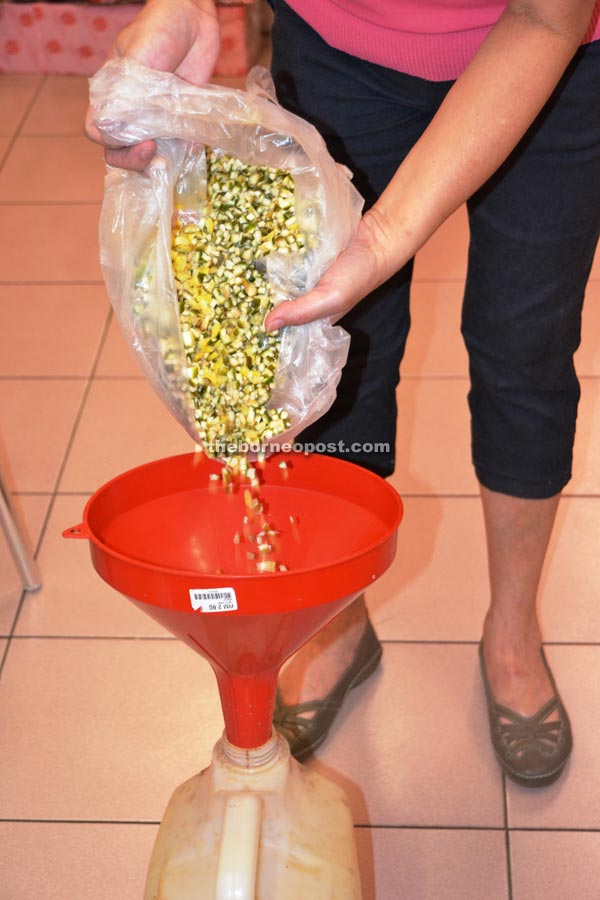MIRI: Housewife Teng Gek Heot no longer needs to dig deep into her purse to get detergents.
She now makes her own ‘eco enzyme cleaner’, which can be used for many household chores.
Teng told The Borneo Post that she came across such a product about six years ago, and loved it since.
“A friend gave me a bottle of her home-made eco enzyme to try. Initially, I was sceptical, but I gave it a try, and the results were marvellous.”
Teng was hooked and has since been making eco enzyme, branded as ‘Fruity Eco-Enzyme’. Occasionally, she does sell some to her friends at RM5 per 1.5-litre bottle.
“The recipe is not complicated. You merely need brown sugar, fruit peels and water, but the fermentation takes quite a long time.”
Teng said she used only fruit peels as the aroma emitted was easy on the nose.
“Fruits like apples, oranges, pomeloes, pineapples and lemons are good for making eco enzymes. I don’t use bananas, dragon fruits and vegetables such as cabbages, as the aroma can be very repulsive.”
Teng said once she had mixed all the ‘ingredients’, she would let them ferment for some time between 10 months and a year.
“Some people suggest a three-month fermentation period, but I believe the time is too short for the ingredients to properly react and release the necessary enzymes.
“The longer the period, the better – just like wine.”
Her eco enzymes are used for cleaning drains, kitchen sink, toilets, bathroom walls, kitchen wares and eating utensils, as well as for washing hands.
She even uses it as a facial cleanser and hair conditioner.
“The ratio of one-part enzymes to 10-part water is more than enough to wipe off any oily surface.
“For first-time users, however, I suggest using a higher concentration for better effect.”
Teng said the eco enzymes were also fabulous natural insect repellent.
“Ever since I started using them, ants, cockroaches, lizards, and rodents have declined in number.
“It could be due to the pungent smell.”
Teng advised those who wanted to make their own eco enzymes to not use glass containers because they might explode due to the release of carbon dioxide from the sugar fermentation.
“I am talking from experience, and I can tell you that it was not fun being covered in pungent enzymes,” she joked, adding that all the bottles used must be tightly sealed.
As for the leftover from the fermentation, she suggested using them as fertilizers.
“Every since I started making eco enzymes, the amount of organic waste disposed of from my house has been reduced substantially. I am happy that I am helping to keep Mother Earth clean.”


